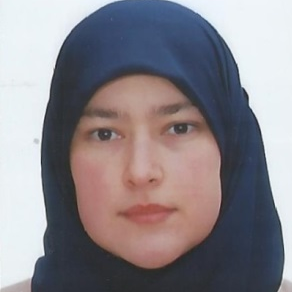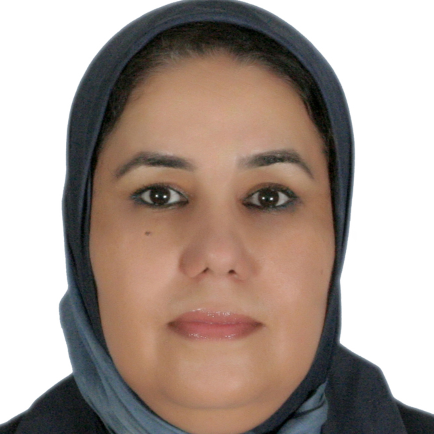International Journal of Information Technology and Computer Science (IJITCS)
IJITCS Vol. 8, No. 6, 8 Jun. 2016
Cover page and Table of Contents: PDF (size: 429KB)
Capacity Enhancement by Using a Multi-User Detector on Uplink Synchronous Mode
Full Text (PDF, 429KB), PP.21-27
Views: 0 Downloads: 0
Author(s)
Index Terms
Uplink Synchronous Transmission Scheme (USTS), Multiple Access Interference (MAI), Uplink orthogonality, channelization code (CH_C), scrambling code (SC_C), multi-user detectors (MUD), interferences cancellation (IC), other cell interferences, uplink capacity
Abstract
The Uplink Synchronous Transmission Scheme [1], is a technique used by operators, that exploit the uplink orthogonality, to reduce multiple access interferences in uplink direction and consequently to increase uplink capacity. The USTS gives better performances when we have an ideal case presented by no channelization code restrictions per scrambling code. In reality, channelization codes are limited. To resolve this problem, several scrambling codes are used to admit more users in the cell. However, the use of different scrambling codes increases the multiple access interference and consequently decreases uplink capacity gain, since signals transmitted by users under different scrambling codes are non-orthogonal. To obtain more performances and therefore to increase the uplink capacity gain, we will study the introduction of a multi-user detector for interferences cancellation, in uplink synchronous mode. For that, two values of interference cancellation efficiency of the multi-user detector are considered. In this study, only the multiple access interference is reduced. To show the effect of other-cell interferences on uplink synchronous mode capacity, two scenarios are considered: an isolated cell and a multiple cell network.
Cite This Paper
Fadoua Thami Alami, Noura Aknin, Najat Erradi, Ahmed El Moussaoui, "Capacity Enhancement by Using a Multi-User Detector on Uplink Synchronous Mode", International Journal of Information Technology and Computer Science(IJITCS), Vol.8, No.6, pp.21-27, 2016. DOI:10.5815/ijitcs.2016.06.03
Reference
[1]3GPP TR 25.854 V5.0.0 (2001-12), 3rd Generation Partnership Project, Technical Specification Group Radio Access Network; Study Report for Uplink Synchronous Transmission Scheme (USTS); (Release5), [Online], Available: www.3gpp.org
[2]Fadoua Thami Alami, Noura Aknin, Ahmed El Moussaoui, Uplink Capacity Estimation and Enhancement in WCDMA Network, I.J. Information Technology and Computer Science, 2013, 09, 21-30, 2013.
[3]M.A.Hernandez, G.J.M.Janssen, R.Prasad, Uplink performance enhancement for WCDMA systems through adaptive antenna and multiuser detection, Delft Univ. of Technol., Netherlands Dept. of Electr. Eng. Vehicular Technology Conference Proceedings 1: 571 – 575, 2000.
[4]D.Dahlhaus,Zhenlan Cheng, Smart antenna concepts with interference cancellation for joint demodulation in the WCDMA UTRA uplink, 6th International Symposium on Spread Spectrum Techniques and Applications 1: 244 – 248, 2000.
[5]S.Hamalainen, H.Holma, A.Toskala, Capacity evaluation of a cellular CDMA uplink with multiuser detection, International Symposium on Spread Spectrum Techniques and Applications, 1: 339-343, 1996.
[6]Mridula S. Korde and Abhay S. Gandhi, A New Technique for Capacity Enhancement in WCDMA Uplink with Synchronization, Lecture Notes on Information Theory, Vol. 2, No. 1, pp. 98-104, March 2014.
[7]Mridula S. Korde and Abhay S.Gandhi, Effect of Synchronization on Uplink Capacity Enhancement of WCDMA, Journal of Information and Communication Technologies, ISSN 2047-3168, Vol. 3, Issue 3, March 2013.
[8]Outes Carnero, José,Uplink Capacity Enhancement in WCDMA,Multi Cell Admission Control, Synchronised Schemes and Fast Packet Scheduling, Ph.D. Thesis,ISBN 87-90834-54-2,ISSN 0908-1224, March 2004.
[9]Camilo Orejuela Mesa, WCDMA, Enhanced Uplink performance evaluation, Master of Science in Telematics, thesis, May 2006.
[10]B.Hagerman, F.Gunnarsson, H.Murai, M.Tadenuma, J.Karlsson, WCDMA uplink interference cancellation performance - Field measurements and system simulations, Nordic Radio Symposium, 2004.
[11]T.Futami, H.Seki, Y.Tanaka, Performance evaluation of DS-CDMA multistage interference canceller in multi-cell environments, Fujitsu Labs. Ltd. Global Telecommunications Conference 1: 247-252, 1998.
[12]S.Hamalainen, H.Holma, A.Toskala, Capacity evaluation of a cellular CDMA uplink with multiuser detection, International Symposium on Spread Spectrum Techniques and Applications, 1: a339-343, 1996.
[13]Cai Meng, Xi Zhang, Ning Zhou, Slimane Ben Slimane, On the capacity of CDMA with linear successive interference cancellation, Sensors, & Syst., R. Inst. of Technol. Dept. of Signals, 5th European Personal Mobile Communications Conference: 362-366, 2003.
[14]Hernandez, M.A., Janssen, G.J.M., Prasad, R. Uplink performance enhancement for WCDMA systems through adaptive antenna and multiuser detection, Vehicular Technology Conference Proceedings, 2000. VTC 2000-Spring Tokyo. 2000 IEEE 51st, pp.571 - 575 vol.1.
[15]Parveen Singla, Jyoti Saxena, Enhanced Capacity Analysis in WCDMA System, International Journal of Electronics and Communication Engineering.ISSN 0974-2166 Volume 4, Number 1 (2011), pp.69-82.
[16]E.J.B. Rodrigues, Uplink Throughput Enhancements and Delay Reductions in 3G WCDMA Systems Using 3.5G Enhanced Uplink Techniques, Spread Spectrum Techniques and Applications, 2006 IEEE Ninth International Symposium on, 28-31 Aug. 2006,pp:223 - 227.
[17]Zhenning Shi, Ming Zhao, He Wang, Mark C. Reed, On the uplink capacity and coverage of relay-assisted UMTS cellular network with multiuser detection, Wireless Communications and Networking Conference (WCNC), 2012 IEEE, pp:2979- 2983, ISSN:1525-3511, 1-4 April 2012.
[18]Ojemeni Uzoma, Correlation between Uplink Noise, Uplink Load and Call Drop Rate in a WCDMA Network, International Journal of Computer Applications (0975 – 8887), Volume 66– No.5, March 2013.
[19]Prof.K.Ayyappan, Dr R.Kumar, Impact of Convolutional Code on Uplink Performance of WCDMA Network using Utility based CAC Scheme with Different Decision Decoders, International Journal of Wireless and Mobile Networking (IJWAMN), Vol. 1, No. 1, November 2013.


